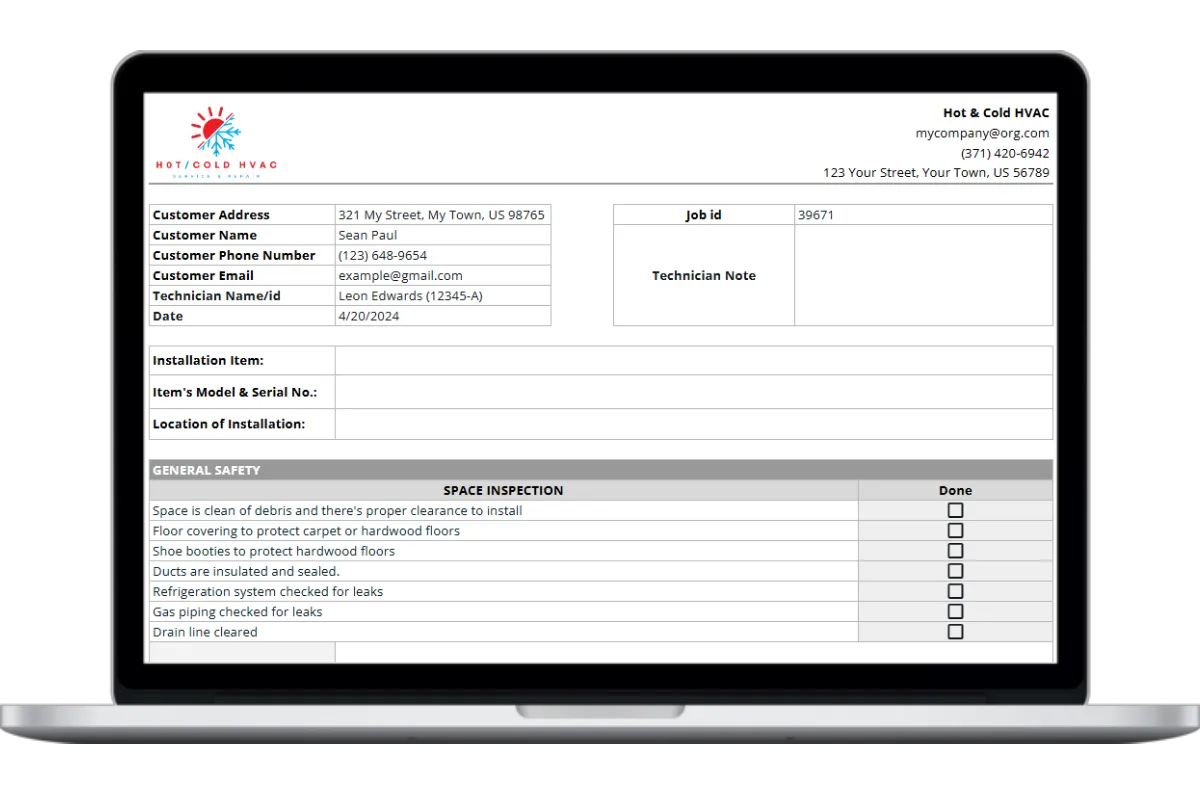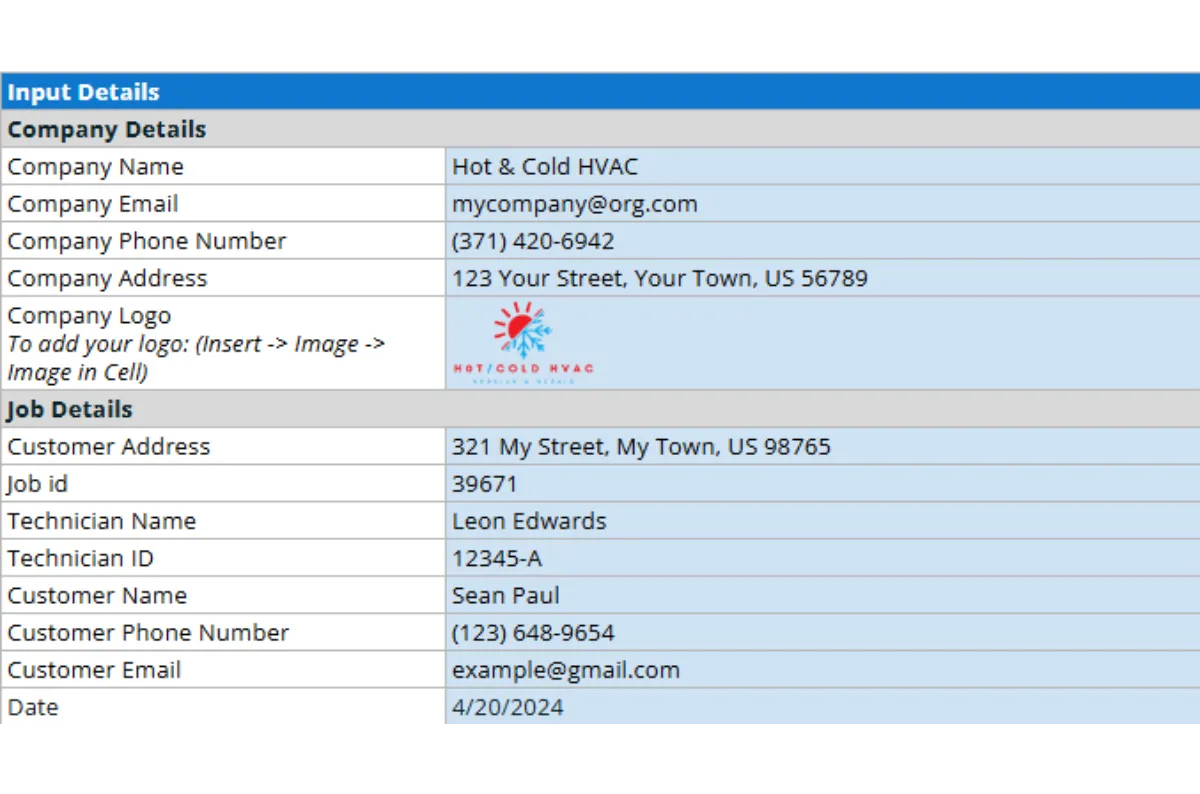
SIMPLE TO LEARN AND QUICK TO USE
Built for Pros: Free HVAC Installation Checklist template from Housecall Pro
This installation checklist template is a quick and easy way to ensure no steps are missed by technicians, keep accurate service records and complete work efficiently on the job site.

Here’s everything included in our HVAC installation checklist template
Creating accurate and thorough installation records is essential for any HVAC company. Having a simple, straightforward installation checklist template makes it a whole lot easier. Our installation checklist template features:
-
Step-by-step instructions that walk you through the entire template
-
Simple customization to add your branding and personalize customer info
-
A printable report for your records or to send to customers
-
Built-in formulas that save you time calculating totals